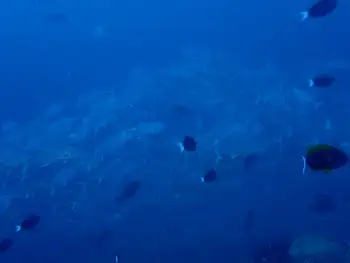Taxonomy
Animalia
Chordata
Actinopterygii
Perciformes
C. Caranx
Pointed-head-fish Perch-like-form Ray-finned Chord-possessing Life-possessing-beings
The Carangidae are a family of ray-finned fish which includes the jacks, pompanos, jack mackerels, runners, and scads. It is the largest of the six families included within the order Carangiformes. Some authorities classify it as the only family within that order but molecular and anatomical studies indicate that there is a close relationship between this family and the five former Perciform families which make up the Carangiformes. They are marine fishes found in the Atlantic, Indian and Pacific Oceans. Most species are fast-swimming predatory fishes that hunt in the waters above reefs and in the open sea; some dig in the sea floor for invertebrates. The largest fish in the family, the greater amberjack, Seriola dumerili, grows up to 2 m in length; most fish in the family reach a maximum length of 25–100 cm.
Carangidae. Retrieved January, 01 2022, from en.wikipedia.org/wiki/Carangidae.
Caranx is a genus of tropical to subtropical marine fishes in the jack family Carangidae, commonly known as jacks, trevallies and kingfishes. They are moderate- to large-sized, deep-bodied fishes which are distinguished from other carangid genera by specific gill raker, fin ray and dentition characteristics. The genus is represented in the Pacific, Indian and Atlantic Oceans, inhabiting both inshore and offshore regions, ranging from estuaries and bays to deep reefs and offshore islands. All species are powerful predators, taking a variety of fish, crustaceans and cephalopods, while they in turn are prey to larger pelagic fishes and sharks. A number of fish in the genus have a reputation as powerful gamefish and are highly sought by anglers. They often make up high amounts of the catch in various fisheries, but are generally considered poor to fair table fishes.
Caranx. Retrieved January, 01 2022, from en.wikipedia.org/wiki/Caranx.

